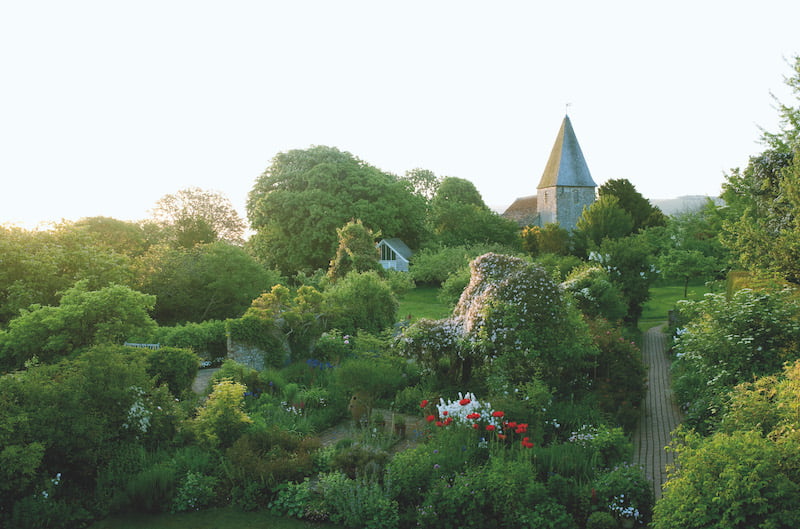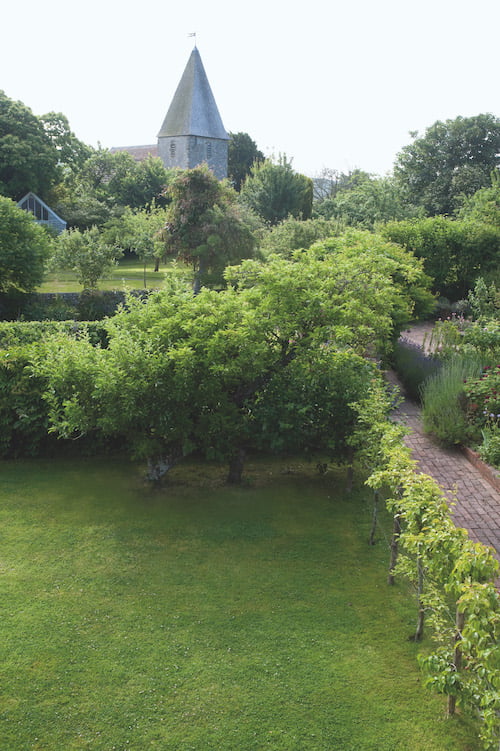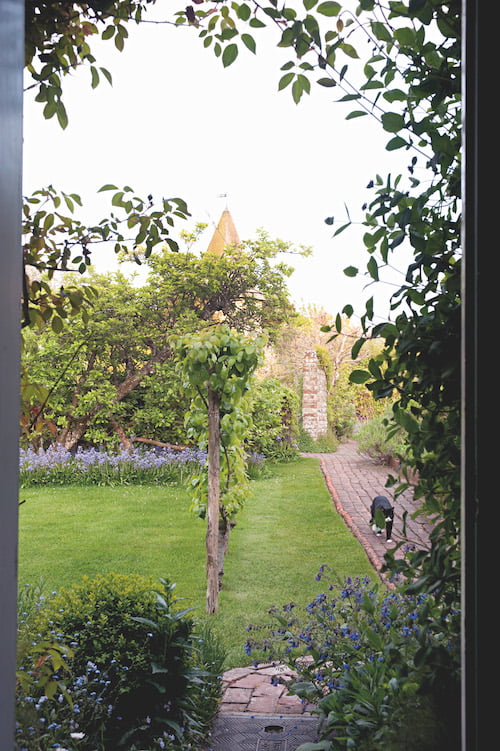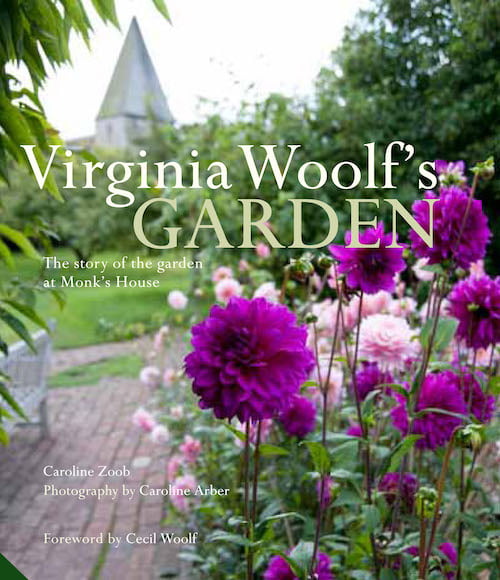Caroline Zoob and her husband, Jonathan, rented Monk’s House, Rodmell near Lewes, East Sussex, from the National Trust for 10 years. This had been the home of Virginia Woolf and her husband, Leonard. They bought it in 1919 and took to the garden with passion. With Virginia’s help Leonard turned an ordinary cottage garden into something special.
Caroline writes that they found the house in a reasonable state, and it was open to the public 4 or 5 days a week, but the garden was overgrown. The condition of their tenancy was that they would restore the garden at their own expense. The only stipulation from the National Trust was that it should have ‘the Bloomsbury look’. With the help of friendly volunteers, and a lot of research, they set about this big task.

They knew the history of Virginia Woolf who is one of the best known modernist writers of the twentieth century, though she had a sad history of nervous breakdowns and near madness. In fact, she walked from that garden to the River Ouse where she ended her life in 1941 when she felt the madness returning. This garden was her haven, her sanctuary and inspired several of her books.
Caroline and Jonathan researched the history of the garden and found Leonard’s meticulous lists of plants purchased, and letters about growing them, very helpful.
Both Virginia and Leonard were great letter writers. They also found Adam Nicolson a great help with photographs and memories as his grandmother, Vita Sackville-West, was a good friend to both Virginia and Leonard.
Vita often visited them and helped with plants and advice as she was creating one of England’s most famous gardens – Sissinghurst- in Kent not far away. Virginia and Leonard were full of ideas and became obsessed with the garden which they both loved.

Occasionally Virginia would complain that it was an absolute sink where money poured away but fortunately her books were starting to be recognised. In 1928 ‘Orlando’ became a best seller and they were never poor again. She wrote several of her books in a small shed in the garden. Their home and garden were a haven during the London Blitz when their Bloomsbury premises were damaged.
In one of their letters Caroline found a delightful anecdote. Virginia and Leonard were strolling round one summer evening and Leonard had his pet marmoset, Mitzi, on his shoulder. This little monkey had come to them from a friend and had been rather sick. Leonard had nursed her back to health and she became deeply attached to him but was very jealous. As they wandered and chatted Mitzi took off and climbed a lime tree near the path. As darkness fell no entreaties from Leonard or Virginia would bring her down so Leonard, knowing his pet very well, started to kiss Virginia. Immediately Mitzie rushed down the tree in a jealous rage.

Caroline found many descriptions and photographs of the garden as it was and they worked hard to restore it near to its former glory with plants that Virginia and Leonard would have chosen.
She is meticulous in using correct botanical names throughout and she writes with great enthusiasm to carry the reader with her on this very challenging quest to restore authenticity to the garden. They slowly start to feel that they can help many visitors see the garden very much the way it would have looked to Virginia and Leonard. The excellent photos taken by Caroline Arber certainly strengthen that feeling. We are very fortunate to have young people like Caroline, Jonathan and their volunteer helpers who are prepared to put in all the hard work of research, and real gardening expertise, to give us back these jewels of historic gardens.

The almost constant stream of visitors during visiting hours could be rather a trial at times, particularly when remarks such as ‘why were they afraid of her?’ were made. But there would be many genuine pilgrims and one day Caroline found a woman in tears near the gate, thinking of Virginia and her sad end.
This is a book that can be enjoyed by anyone interested in the restoration of an historic garden; in the lives of intelligent young people who work hard to restore such gardens and live in a national treasure and those who admire Virginia Woolf.
Caroline Zoob is a teacher of embroidery and home ware design. She writes clearly and well. The book has an example of her work to start each chapter. Perhaps this explains why the publisher is Jacqui Small who has published mainly cookery and craft books. This is a lovely book to look at and a joy to read.
The book: ‘Virginia Woolf’s Garden’ by Caroline Zoob. Photographs by Caroline Arber. Published by Jacqui Small. Nov.2013
